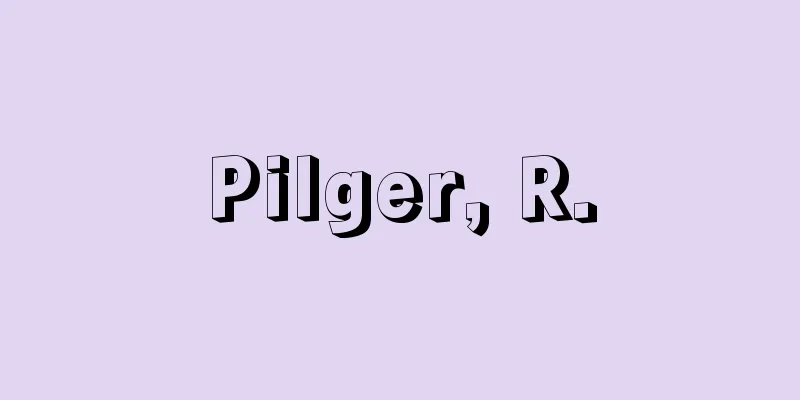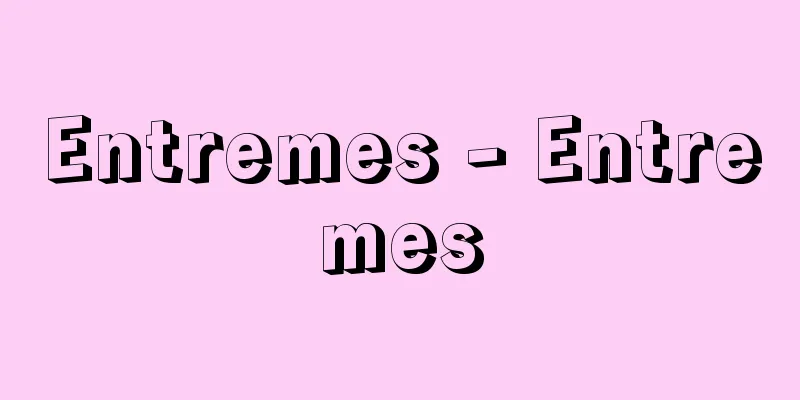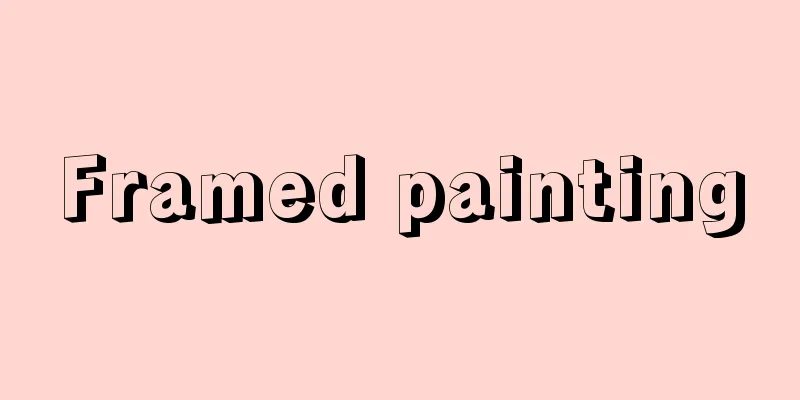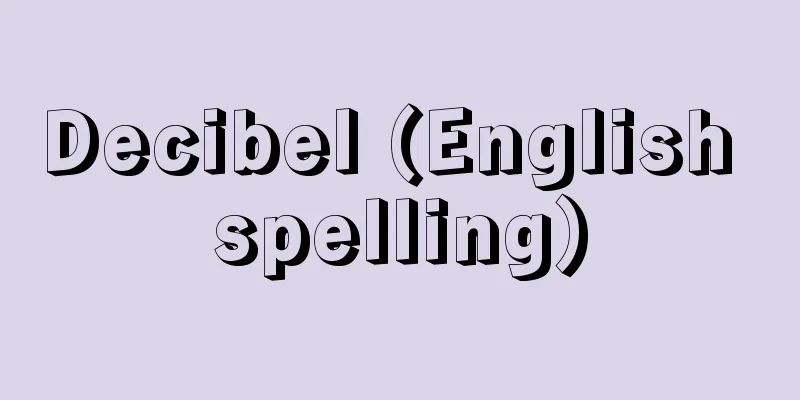Stereoscopic print - Rittaiinsatsu (English name) stereoscopic print

|
A printing method or printed matter that makes flat images appear three-dimensional. It is known that humans get a sense of three-dimensionality by viewing an object with their right and left eyes, and this method utilizes this principle. Mass production has become possible thanks to the development of color photography, precise photoengraving technology, and the ability to manufacture special plastic lenses more accurately and cheaply than before. Three-dimensional printing techniques include holography, anaglyph, and lenticular. The holography method takes advantage of the wave-like nature of light, and uses a laser to record the light waves reflected from an object in the form of interference fringes. When the wavefront information is observed, it appears three-dimensional. Holographic printing, which applies this technology, is widely used for anti-counterfeiting purposes on credit cards, banknotes, coupons, tickets, ID cards, brand tags, etc., as well as in magazines, movie catalogs, etc. In anaglyph mode, an image of an object is taken with separate cameras for the right and left eye, and printed in two colors, red and blue. When a red and blue filter is applied to each eye (using special "red-blue glasses"), the printed material appears three-dimensional. Examples of this method include photo books, posters, magazines, and newspapers. In the lenticular method, an image composed of multiple photographs is pasted (or printed) on the back of a lens sheet with many rows of small, semi-cylindrical convex lenses. For example, images taken from three directions (image A taken from the right, image B taken from the center, and image C taken from the left) are divided into long, thin strips, and the divided images A, B, and C are arranged alternately (A1, B1, C1, A2, B2, C2, ...). The divided images (for example, A1, B1, C1) are pasted together (or printed on the back of the sheet) so that they match one of the convex lenses. When you look at this, the printed material appears three-dimensional depending on the angle between your right and left eyes. In addition to this 3D effect, the lenticular method can also produce animation effects (where an image appears to move by combining many slightly different images) and changing effects (where an image appears to change by combining several completely different images). It is also possible to combine multiple effects, such as 3D and changing. It is often used on cards and displays as eye-catching printed matter. There is also a technology that uses countless tiny round lens sheets and the principle of moire to make patterns appear to float and sink (three-dimensional). [Miki Nakamura] [References] | |©Printing Society of Japan Publishing Division "> Principles of 3D printing (lenticular method) Source: Shogakukan Encyclopedia Nipponica About Encyclopedia Nipponica Information | Legend |
|
平面上の画像を立体的に見えるようにした印刷方法や印刷物。人間は右目と左目を使って物体を見ることにより立体感を得ることが知られているが、その原理を利用している。カラー写真の発達と精密な写真製版技術、プラスチック製の特殊レンズの製造が従来より精度よく安価にできるようになったことにより大量生産が可能になった。 立体印刷の技術としては、ホログラフィーholography、アナグリフanaglyph、レンチキュラーlenticularなどがある。 ホログラフィー方式では、光が波である特性を利用し、レーザーを使って物体から反射した光波を干渉縞(じま)の形で記録する。波面の情報を観察すると立体的に見える。この技術を応用したホログラム印刷は、クレジットカード、紙幣や金券・チケット類、ID証類、ブランド・タグなどの偽造防止用途のほか、雑誌や映画カタログなど幅広く利用されている。 アナグリフ方式では、右目用と左目用に別々のカメラで撮影した物体の画像を赤、青の2色で印刷する。左右の目にそれぞれ赤、青のフィルターをかける(専用の「赤青メガネ」を用いる)と、印刷物は立体的に見える。写真集・ポスター・雑誌、新聞などに使われた例がある。 レンチキュラー方式では、細かな多数のかまぼこ型の凸レンズが何列にも並んだレンズシートの裏側に、複数の写真等を合成させた画像を貼り合わせる(または印刷する)。たとえば、三方向から撮影した画像(右から撮った画像A、中央から撮った画像B、左から撮った画像C)を細長く短冊状に分割し、分割された画像A、B、Cの一つ一つを交互に並べる(A1・B1・C1、A2・B2・C2、…)。そして分割画像(たとえばA1・B1・C1)と一つの凸レンズが合致するように貼り合わせる(またはシートの裏面に印刷する)。これを見ると、右の目と左の目の結ぶ角度によって印刷物は立体的に見える。レンチキュラー方式では、このような3D効果のほか、アニメーション効果(少しずつ異なる画像を多数枚組み合わせることによって画像が動いて見える)や、チェンジング効果(まったく異なる複数の画像を組み合わせることによって画像が変化して見える)なども出すことができる。3Dとチェンジングなど複数の効果を組み合わせることも可能となっている。目を引く印刷物としてカードやディスプレーなどによく使われる。その他、無数の微細な丸型のレンズシートとモアレの原理を利用して、パターン模様が浮き沈みして(立体的に)見えるようにした技術もある。 [中村 幹] [参照項目] | |©印刷学会出版部"> 立体印刷の原理(レンチキュラー方式) 出典 小学館 日本大百科全書(ニッポニカ)日本大百科全書(ニッポニカ)について 情報 | 凡例 |
Recommend
XBT - Expendable Bathythermograph: XBT
A throw-away type water temperature vertical distr...
Araki Mataemon
Year of death: August 28, 15 of the Kan'ei per...
Educational system - student
This law established Japan's first modern sch...
Kartli
…the Greek name for ancient eastern Georgia. They...
Catalog Culture
...In addition, with the recent development of el...
Toyabe Shuntei
Year of death: December 21, 1908 (Meiji 41) Year o...
Kariganeya
…In addition to Korin, which he began using at th...
Woldemaras, A. (English spelling) WoldemarasA
...However, in October of the same year, Poland o...
Heavy day - 11th
〘Noun〙 In the old calendar, this refers to the day...
Chinese rice-paper
…Young stems have a thick pith, which is extracte...
Kikusan Mountains - Kikusanchi
…While the Chugoku Mountains are a continuous mou...
Munda tribe - Munda tribe (English spelling)
A tribe living in central and eastern India, with ...
Irumu - Irumu
...In other words, Islam, which referred to faith...
Asterotheca okafujii (English spelling) Asterothecaokafujii
...Fossils of various horsetails, ferns (especial...
Selling and running - Urinige
In stock or commodity trading, when buyers start s...









